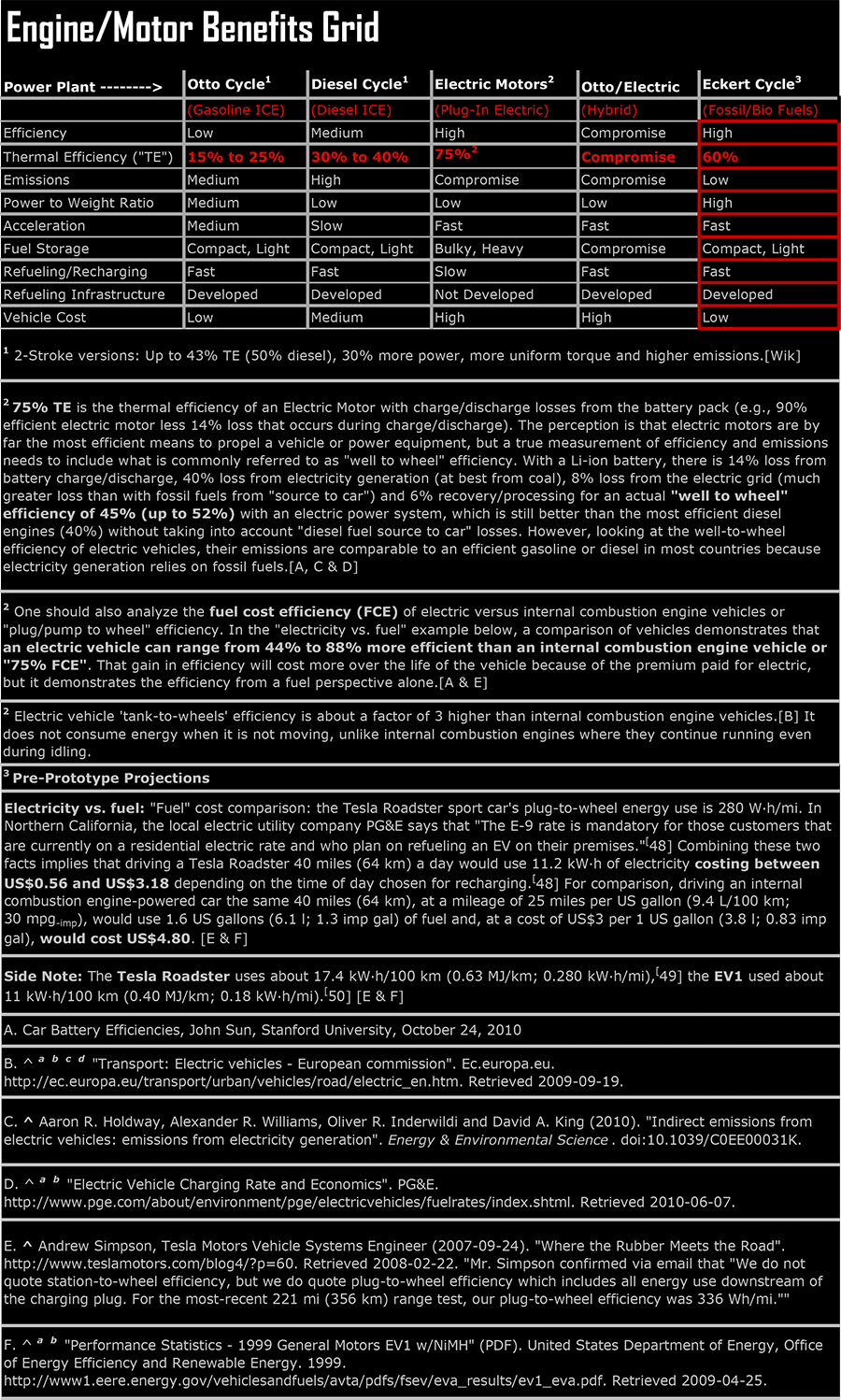ECKERT CYCLE ENGINE (ECE): The most efficient and promising of all currently proposed engine technologies without the high price tag and “deal breaking” limitations. Technology that is available in the short-term, not off in the distant future.
- A uniquely designed ECE Heat Exchanger allows liquid fossil fuels or biofuels (the source of heat) to burn for a much longer time than in conventional boilers or conventional cylinder combustion, providing more opportunity to eliminate unburned fuel, virtually eliminate harmful emissions (CO & NOx) and harvest more energy in the combustion process
- In the ECE Heat Exchanger, the heat is transferred to a working fluid housed inside working fluid tubes in order to pressurize and vaporize the working fluid, which is then directed to a superiorly designed light-weight 4, 8, 12, 16, etc. cylinder X-Engine where the heated, pressurized working fluid moves the pistons in the cylinders via expansion (power strokes) and rotates the crankshaft in a most balanced manner
- The uniquely designed X-Engine consisting of pairs of dual piston connecting rods that operate the crankshaft using an eccentric where each connecting rod is in a power stroke 100% of the time, which produces very high torque and horsepower
- The X-Engine is a true two-cycle design (power and exhaust) that wastes very little heat because the working fluid, after producing work in the X-Engine, and still under pressure (relative to ambient air) as exhaust, is directed back to the Heat Exchanger to further contribute to the heat exchange process. The working fluid “exhaust” stays within the system
- In the ECE Heat Exchanger, the products of combustion (hot fuel and air), after expending most of its’ energy by transferring its’ heat to the working fluid is released into the atmosphere in the form of cool exhaust gasses (the “true exhaust” in the system)
- THE RESULT IS (Projections):
- 2X to 3X the fuel economy of conventional engines (Diesel & Otto Cycles)
- Virtual elimination of harmful emissions (CO, NOx and Unburned Hydrocarbons)
- Significant reduction of CO2 emissions
- Higher torque with no sacrifice of horsepower
- Uses existing fueling infrastructures
- In vehicles, does not require a conventional transmission or elaborate cooling system
- Modular engine design (scalable)
- Longer engine life with less service and repair required to maintain performance
- Adaptable to virtually every type of vehicle or equipment that uses an engine

Automotive, Other Vehicle and Small Engine Opportunities:
In the U.S. alone, cars and light trucks make up 43% of oil usage. Approximately 72 million automobiles are sold annually worldwide, with 15 million of those sales coming from the USA. Approximately 33 million new motorcycles are sold annually and 1 million of those come from the USA. Finally, approximately 100 million small off-road engines are sold annually worldwide, and the USA’s portion is 35 million of those sales.